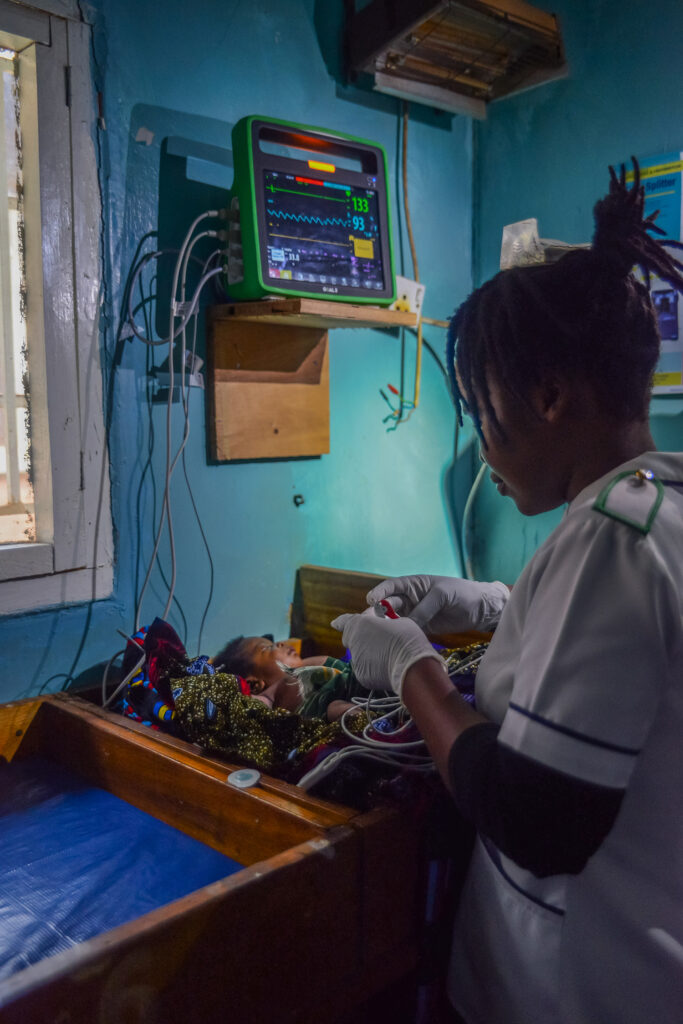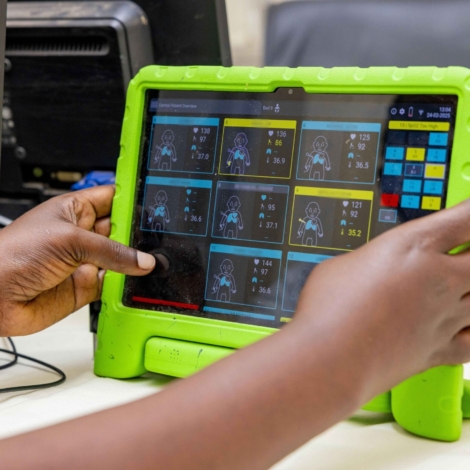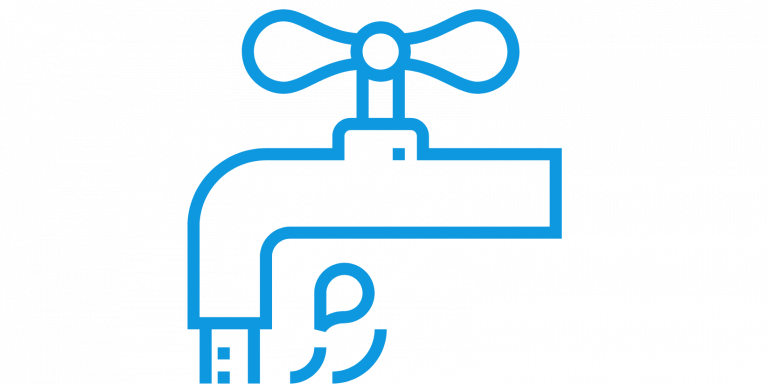
Photo: GOAL3
A pediatric patient monitoring system called IMPALA, designed for low-resource hospitals in Sub-Saharan Africa, may be saving the lives of children and newborns while also cutting costs, research suggests. The Netherlands-based health technology venture GOAL 3 has deployed the system in Rwanda, Malawi, and Tanzania. The technology frees up time for healthcare workers. It conserves resources by facilitating early interventions that often require more affordable and effective treatments.
IMPALA has launched against a backdrop of rapid global improvement in childhood mortality rates, that has left sub-Saharan Africa lagging. In 1990, 1 in 11 children worldwide died before reaching age 5. By 2020, that number had improved to 1 in 27, representing a 60 percent decline. Sub-Saharan Africa, however, continues to have the highest under-5 mortality rates in the world. Sub-Saharan Africa and south Asia accounted for more than 80 percent of the world’s under-5 deaths in 2020, while they had only 53 percent of live births, the World Health Organization reports.
Health technology such as IMPALA can improve those statistics. GOAL 3 exhibited IMPALA during this year’s annual Transforming African MedTech Conference in Nairobi, Kenya. At the event, Engineering for Change interviewed Jelle Schuitemaker, Co-Founder of GOAL 3, to understand how the system works. He explains the innovation behind the technology that provides continuous vital sign monitoring and advanced analytics in under-resourced health systems.
“The IMPALA system was inspired by the experiences of a tropical doctor working in Tanzania who recognized the critical need for technology to help scale the work of healthcare workers facing shortages. The system consists of three primary elements: a patient monitor, a tablet application, and a server,” Mr. Schuitemaker says.
IMPALA is a patient monitoring system that supports overburdened health workers in low- and middle-income countries. It addresses the challenges of staff shortages and inadequate equipment in low-resource settings. The shortages hinder timely recognition and management of patients’ conditions, resulting in poor outcomes. They create a vicious cycle of delayed interventions, increasing severity, and complications that demand more time and resources, Mr. Schuitemaker says. Every hour of delay in detecting conditions such as sepsis results in a 10 percent rise in mortality rates.
Design choices and cost effeciveness
IMPALA has adapted the vital sign monitoring capabilities typically found in intensive care units, adding tailored features and algorithms to make it robust for low-resource settings. The system’s unique features and innovation combine multiple vital sign measurements into a single device. It applies algorithms and artificial intelligence to provide early warnings of critical patient events. Also, it has a patient avatar visualization, which is a tablet application, making it easier for low-trained workers to interpret data.
“While designing the Impala System, we considered several designs for challenging environments, and the development team prioritized specific features such as durability and environmental resistance of the system. We accounted for factors such as heat resistance, insect-proofing, and screen size,” Mr. Schuitemaker says.
The development team prioritized features such as durability and environmental resistance of the system. We accounted for heat resistance, insect-proofing, and screen size,” – Jelle Schuitemaker
Additionally, the team at GOAL 3 had to carefully balance cost and quality to ensure the system remained affordable for the low-resource context where it is used.
Research suggests that the system saves lives and reduces costs. A cost-effectiveness study in Zomba Hospital and St. Luke’s Hospital in Malawi found that the system reduced mortality in pediatric patients by 40-51 percent at a cost per life-year saved of (USD) $3.35. There were 29-32 percent fewer critical events leading to a total of 59 percent reduction in Disability Adjusted Life Years. In neonatal care, mortality was reduced by 27 percent at a cost per life year saved of $1.61, according to data published in November 2025 in preprint in the journal MedRxiv.
The reviews
Hospitals in Rwanda and Tanzania using the IMPALA system have given positive reviews. Healthcare workers noted significant reductions in workload and improved reliability of patient monitoring. The system was also linked to decreased mortality rates. And more than 90 percent of health workers reported reduced workload and stress in Malawi.
Challenges in adoption, funding and scaling
The team faced one significant challenge during the adoption process, which was gaining approval from patients’ families to use the monitoring system. Some families expressed concern that the technology was contributing to poor outcomes. To overcome this, the team collaborated closely with local healthcare providers to educate families and address their concerns. They also encountered challenges related to financial sustainability and scaling of such innovations, which indirectly affected adoption across low- and middle-income countries.
Innovators must move beyond relying on large NGO programs and instead seek opportunities to directly engage with health ministries and hospitals. – Jelle Schuitemaker
Mr. Schuitemaker’s advice to innovators is this: “The funding environment has become challenging due to USAID budget cuts. Innovators must move beyond relying on large non-governmental organization programs and instead seek opportunities to directly engage with health ministries and hospitals. This engagement requires proving the business case and cost-effectiveness of the innovations.”
IMPALA has regulatory approval in Tanzania and Rwanda. See GOAL 3’s product video below for more.

